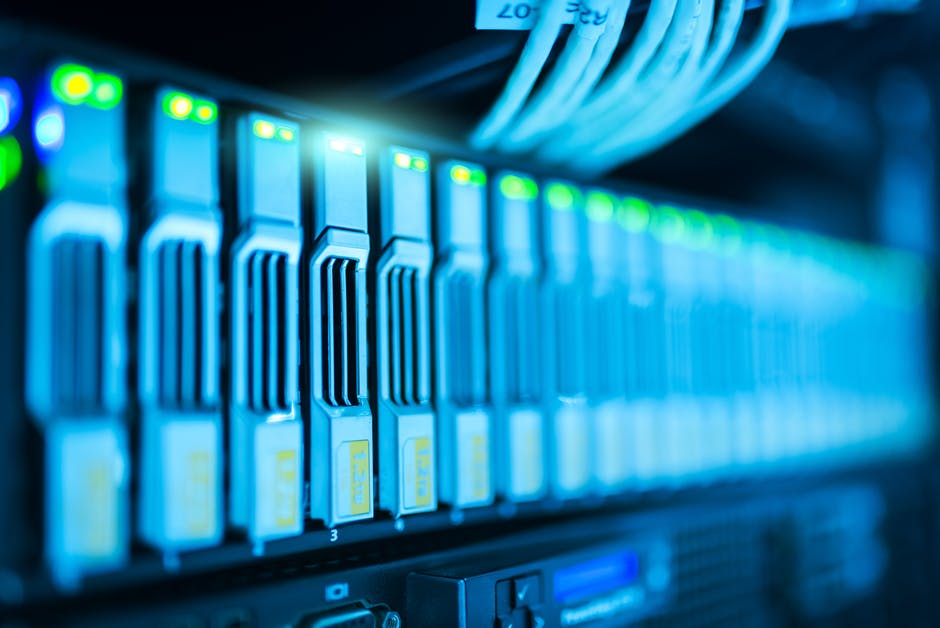The worldwide population is currently around 7 billion. Perhaps more staggering to some is the fact that there are an estimated 3.5 billion internet users. That means that at least half of the Earth interacts with the internet in some way on a daily basis.
Ever since the internet was conceived in 1983, it’s been increasing in popularity. Whether it be from watching moves to browsing Facebook, checking your Amazon delivery or and even talking to mom, we all depend on the internet in our own way.
With the massive amount of people using the internet, it can only be expected that people experience issues with their internet.
If you’re one of those people, don’t fret. Internet connections can (and do) slow down. Knowing what to in these cases will make your life a whole lot easier going forward.
In this article, we’ll discuss the 5 tools you need in order to speed up your computer network once and for all!
Speed up Your Computer Network
Speeding up your network may not be as simple as singling out a culprit for your slow network. Applying these five methods together should give you faster network speeds:
1. Ethernet
It’s probably a fact that’s become ingrained in your head. Ethernet is better than wifi. But why is that the case?
An Ethernet connection is simply a wired connection to your router, meaning that Ethernet connections are free from interference and bandwidth shortages. WiFi shares bandwidth with all the devices connected to it. The more connected devices, the slower your network.
WiFi is also transmitted using radio frequencies. Other radio frequencies, such as those found in kitchen appliances, remote controls, and other routers, can cause interference with your WiFi network, which can slow down and sometimes even cut off your WiFi temporarily.
Interference and bandwidth immunity aren’t the only advantages that Ethernet brings to the table. Ethernet connections are infinitely safer than WiFi networks since hackers need physical access to your router in order to hack them. WiFi can be easily hacked or jammed because it’s wireless.
2. Internet Service Providers (ISPs)
These are internet companies that provide you with internet access to their customers. Depending on who your ISP is, be it Verizon, Cox Communications, AT&T, or what have you, you’re going to have to make sure you’re getting what you need. Word on the street is that Elon Musk plans on launching 12,000 Starlink Satellites via SpaceX. When access is available, that’s going to be the ISP we’ve all been waiting for as it could deliver network speeds faster than Google Fiber…
ISPs offer their internet services in two main categories. First, they offer internet with data caps, meaning you’re internet shuts off or slows down significantly after you use a certain amount of data. The other option is unlimited internet, which, as the name implies, lets you use as much internet as you want.
If you are experiencing consistently slow internet, the issue could be the internet package you are getting from your ISP. Make sure to get in touch with them so that you know exactly what you’re in for. If you’re a long-term customer, you might even get a discount on an internet package.
Want to know how fast your internet is? Go to https://fast.com/
3. Routers Matter
If you don’t know what a router is, then don’t worry. You’ve come to the right place. In this short section, you’ll not only learn about what routers are but also why they matter.
Before we learn about modern routers, it’s good to know what a modem is. Modems are electronic devices that connect you to your ISP. Routers then distribute the internet signal (from your modem) to the rest of your home or office.
The short and sweet is that a newer router will provide you with faster WiFi capabilities, assuming that you pay for fast internet. The current WiFi standard that your home router will most likely have is called WiFi 5, or 802.11ac. Older technologies like 802.11n and 802.11g will also work on most of today’s devices but contain less technology, meaning that your network could be less reliable.
4. Devices Galore
Having a high-speed internet connection and a router to match it is all fine and dandy until you realize that your computer still takes 5 minutes to load the Google search page. The last piece to the puzzle is your computer.
If you’re paying that hefty internet bill and your computer is still slow to connect to the internet, then it might be time to clear up your cache.
Clearing your cache is the equivalent of dusting off your furniture or swiping the crumbs off your table. You don’t have to do it, but it sure helps to ward off the ants. Clearing your cache is all about removing the little bits of information that the websites you visit collect for their marketing purposes.
You can either clear your cache using a plugin or you can do so manually. For a guide on how to clear your cache manually, check this guide out.
5. Burn the Leeches
No, don’t literally go out and burn leeches. Leeches could come in the form of unwanted guests who are borrowing your WiFi signal. And, believe it or not, this could be the reason your network is lagging.
Make sure to change your WiFi password if you’ve given it to neighbors and to turn off your guest network, as these could be seriously slowing your network.
Give It a Shot
You’ll never know if your network could be faster unless you try out these tips. Perhaps implementing a single one will speed up your computer network. Otherwise, a combination may be necessary to solve your troubles.
Whatever the case may be, remember to keep in mind that Ethernet is usually the quick solution for a laggy WiFi connection. Move on to the other steps if Ethernet doesn’t fit your needs or if it simply doesn’t solve your network lag.
If you’d like to learn more about technology-related topics and for more troubleshooting tips, then make sure to check our blog out. Otherwise, if you’d like to learn more about who we are and what we do, then let’s get in touch today.



